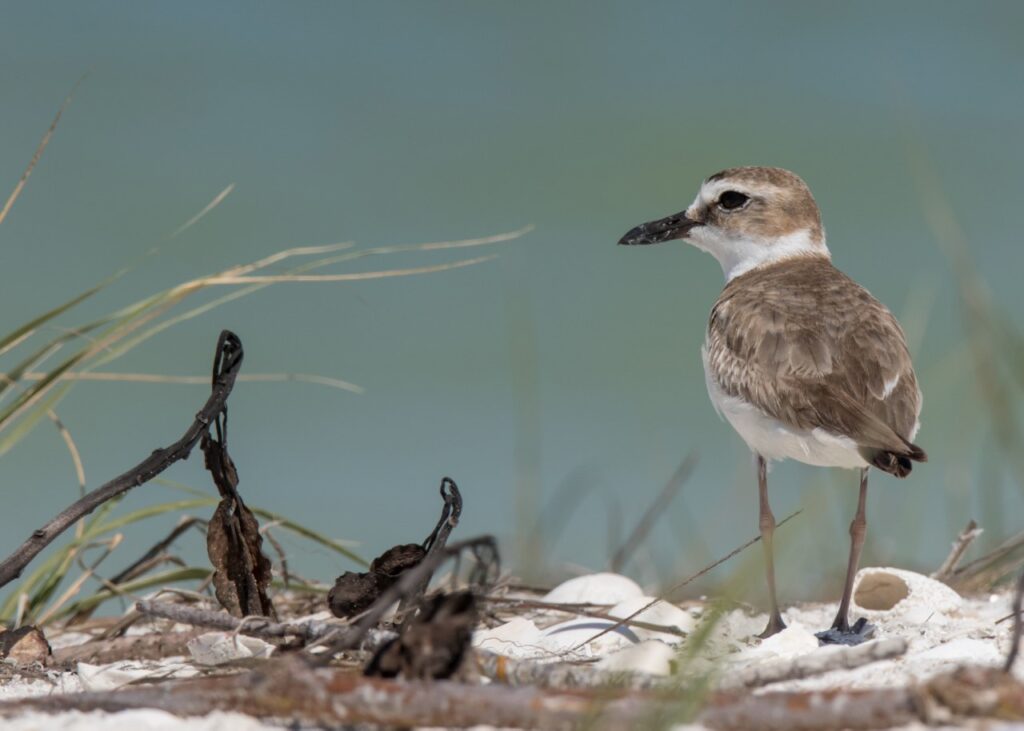Southwest Florida Coastal Birds are starting to lay their eggs.

~Boaters and beachgoers urged to give space to nesting birds along area beaches.~
- Beach-nesting birds have begun their breeding season along Florida’s coasts. Spring and summer are very important for these endangered species because that’s when they have to raise their young without getting hurt by people, storms, or other animals.
The eggs of seabirds and shorebirds are laid right on the sand. They think that people and dogs are dangerous and will fly away if beachgoers or their dogs get too close. Repeated human disturbance often results in birds abandoning the colony. Important nesting areas are posted or roped off so that people can’t go there while state-threatened birds lay eggs and raise chicks. This keeps people from disturbing the birds.
The Second Chance Critical Wildlife Area (CWA) in Collier County is now closed to boaters and landers until August 31. This is to let the birds nest without being disturbed. The shell island is at the end of Cape Romano on the south side, which is south of Marco Island.
Audubon’s Southwest Florida Shorebird Program Manager Rochelle Streker said, “In the coming weeks, more signs will be put up on Collier’s historically important nesting beaches, like Big Marco CWA, Morgan Beach, and Dickman’s Point, to help birds choose where to nest for the summer of 2023.” These beaches include Big Marco CWA, Morgan Beach, and Dickman’s Point.
Birds that nest on beaches and are protected by the state are often marked with informational signs strung together with string and flags.
As a part of the Florida Shorebird Alliance, Audubon Florida works with a lot of other conservation groups and local volunteers to teach people about birds that nest on beaches. Filomena and Joe Cardinale are dedicated volunteers with Rookery Bay Reserve’s Team OCEAN program that engages boaters along Collier county’s many island beaches and CWAs.
“Upon encountering recreational boaters or beachcombers at a closed area, we educate them about the meaning of a CWA, the activities of the birds in this area, and the importance of keeping a safe distance to avoid disturbances to the bird population,” says Filomena. “Getting visitors involved is important for helping them understand how birds breed and move, and it goes a long way toward protecting flocks,” she said.
Staying out of posted nesting areas and giving the birds plenty of space allows birds to successfully raise their chicks. These birds nest right on the sand and shell beach, which makes them very vulnerable to people. It is important for boaters to heed signage and avoid areas posted as “no trespassing,” even if they don’t notice any birds.
How to protect beach-nesting birds so they can raise the next generation of chicks to adulthood:
• Respect posted areas, even if you don’t see any birds inside.
• If birds dive-bomb you, carefully move away as there may be a nest nearby.
• Make sure you don’t leave any trash or food scraps behind, as this can attract dangerous animals.
• Keep dogs on a leash (if they are allowed on the beach at all), on board your boat, or at home.
Audubon Florida protects birds and the places they need. Audubon uses science, advocacy, education, and conservation work on the ground all over the Americas. Audubon’s state programs, nature centers, chapters, and partners give it a reach that is unmatched. Each year, they reach millions of people to educate, inspire, and bring together different communities to take action for conservation. Since 1900, Audubon has been a non-profit organization that works to protect wildlife. They want a world where both people and animals can live well. Learn more at Fl.Audubon.org.
